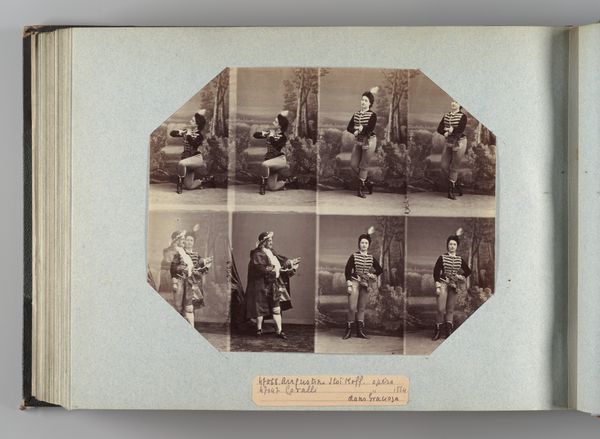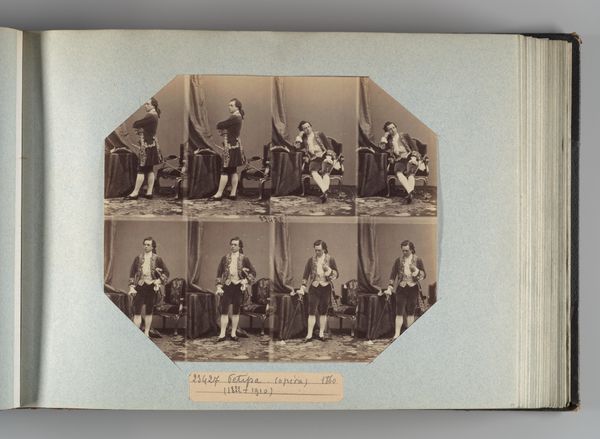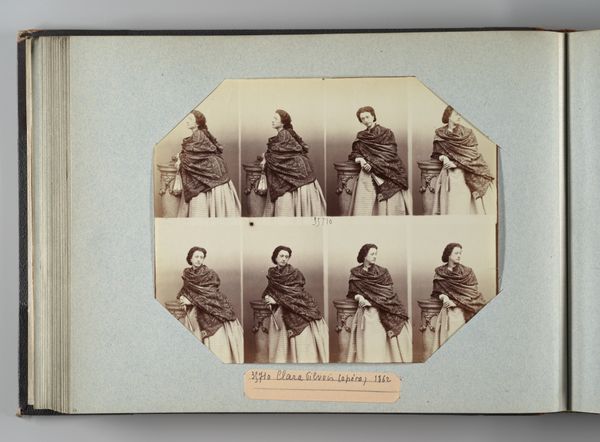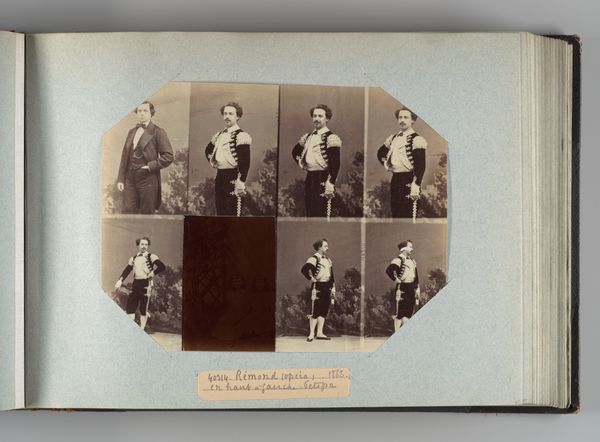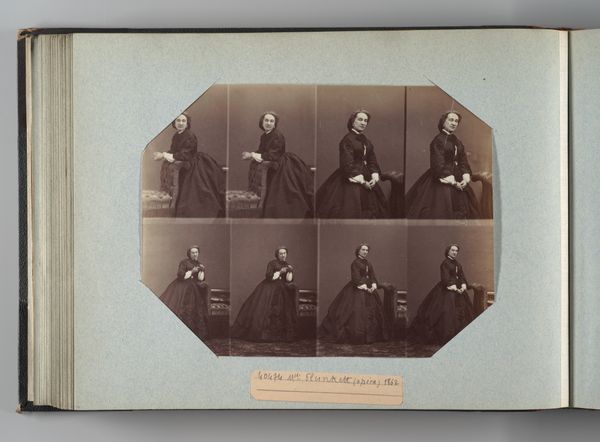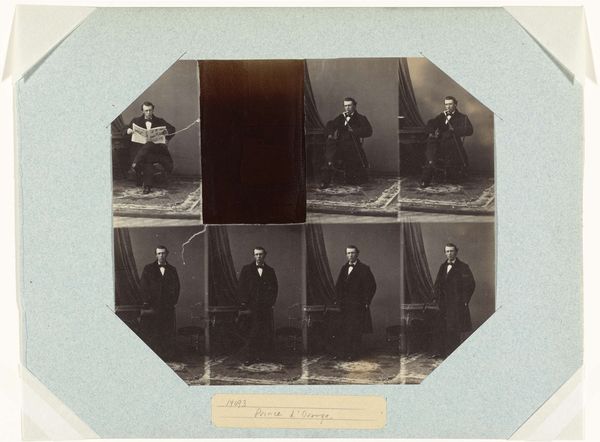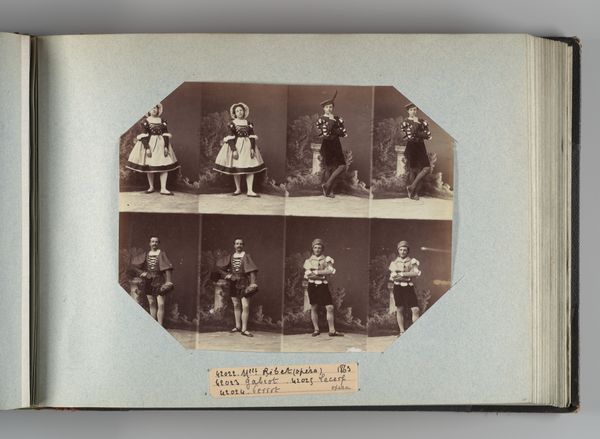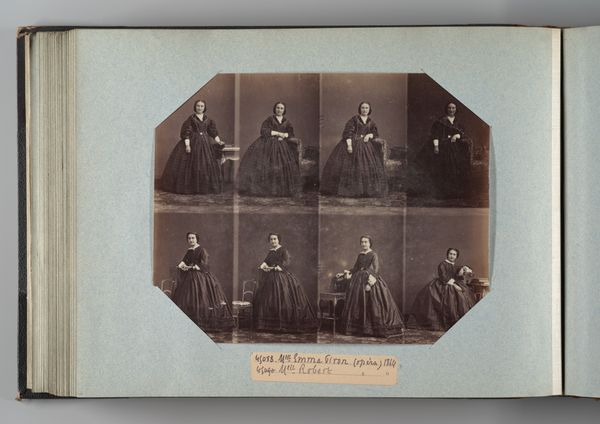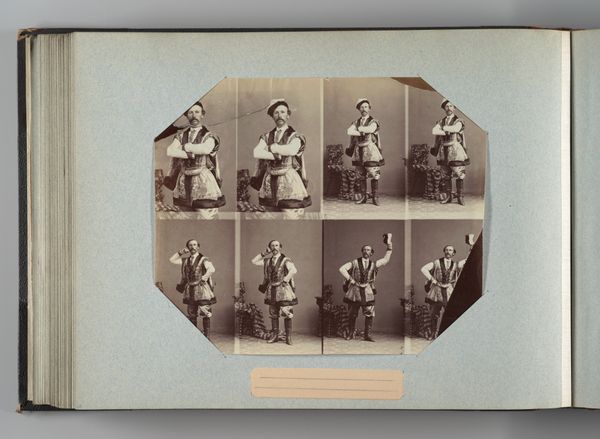
daguerreotype, photography
#
portrait
#
daguerreotype
#
archive photography
#
photography
#
historical photography
#
historical fashion
#
old-timey
#
history-painting
Dimensions: height 200 mm, width 232 mm, height 263 mm, width 348 mm
Copyright: Rijks Museum: Open Domain
Editor: Here we have "Acht portretten van Mariano Carbonell" by André-Adolphe-Eugène Disdéri, created in 1864, using the daguerreotype process. The eight different views of the man give a real sense of his presence... almost like a very early form of a GIF. As a history painting that relies on photography, it really plays with that time period’s artistic conventions. What strikes you about this work? Curator: It's fascinating how Disdéri utilizes the carte-de-visite format to present multiple views of Mariano Carbonell. This innovation speaks volumes about the burgeoning democratization of portraiture in the mid-19th century. Instead of one stiff, formal portrait, the sitter is presented from several perspectives. How do you think this multiplicity challenges the traditional power dynamics inherent in painted portraits of the elite? Editor: That's a great question. I suppose it does make the sitter seem more approachable, more 'everyman,' less like an untouchable figure on a pedestal. The repetition normalizes him, right? Curator: Precisely! And think about the impact on dissemination. Suddenly, images of individuals, even those not from the uppermost echelons of society, could be easily reproduced and distributed. How does this shift influence the way people construct and consume identity? What role do photographic studios, like Disdéri's, play in shaping social perceptions and aspirations? Editor: It is quite fascinating how these images offered a sense of connection across distances, turning photography studios into crucial actors in shaping these developing perceptions of identity during the mid-19th century. Thanks for bringing up those key social points. Curator: Absolutely! Examining photography through the lens of its social and cultural impact enriches our understanding not just of the medium but also of the broader historical context.
Comments
No comments
Be the first to comment and join the conversation on the ultimate creative platform.
